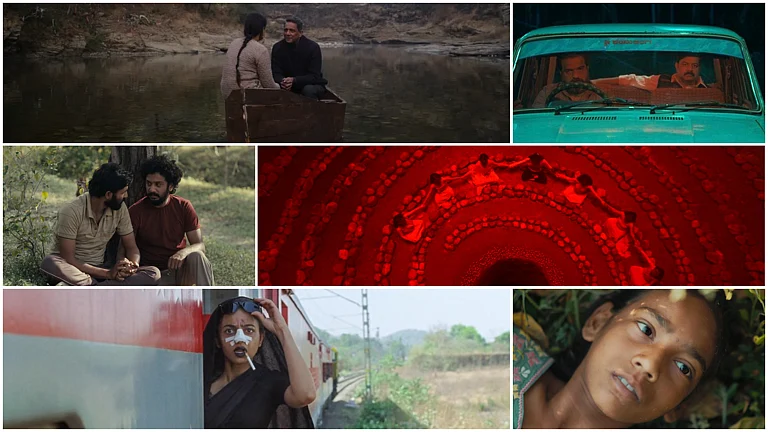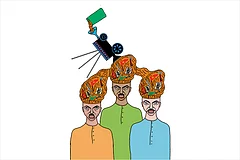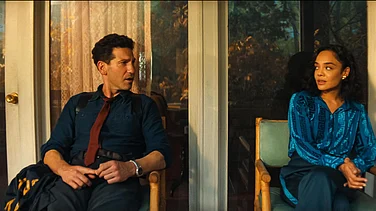One of the most persistent questions when discussing the interplay of cinema and society is who influences whom— whether the movies merely reflect the already existing socio-political narratives or they play a role in forming their narratives. However, this question does not deny that cinema influences viewers, shapes narratives, and forms opinions.
Cinema, indeed, can be considered the most potent tool in opinion formation, a fact very well known to Nazi propagandist Joseph Goebbels who used it as a medium for the propagation of Nazi ideals and the genocide of Jews in Germany.
Popular cinema’s ability to intrude on the mass psyche is also visible in India, where cricket and Bollywood determine how we think and act. It has determined our idea of nation and nationhood, showcasing characters that an Indian wishes to be. However, Bollywood’s idea of nationhood often replaced ‘Indianness’ with ‘Hinduness’—they often resorted to homogenising the nationhood using one religion by excluding another.
This exclusionary practice against Muslims in Bollywood did not start with the rule of the BJP—it became more direct with their rule. The various symbols, stereotypes, and situations employed in Bollywood movies constantly attempted to ‘other’ the Muslims, thereby reinforcing Hindu nationalist agendas.
The Terrorist, the Patriot, and the Veiled Muslim Woman
There has been a significant change in the representation of Muslims in Bollywood cinema since the period of post-liberalisation. The ‘soorma-lined’ eyes of the Nawabs were replaced by the ‘blood-shot’ eyes of the terrorists. There were, most importantly, three main stereotypes surrounding Muslims in post-liberalisation Indian cinema.
Muslims are constantly made to think of themselves as outsiders. This ‘othering’ is done overtly through hate crimes and campaigns and covertly through mediums like films.
The first and the most popular one was that of the terrorist. Since 26/11, there has been a string of movies that discussed India’s defence and security, and the danger came from one group—the Muslims. These characters are often found with a skull cap and a tasbi at their hand, spewing venom at India and Indians. They are shown to be speaking in Urdu and chanting Allahu Akbar at regular intervals.
The idea that all Muslims are not terrorists but all terrorists are Muslims is repeated in the innumerable movies that came during that time. Movies like Kurbaan, New York, Fanaa and Sarfarosh show that even though Muslim characters appear to be progressive and patriotic, at the end of the day, they are terrorists.
In Kurbaan, Saif Ali Khan, a professor who appears as a representative of the ‘young India’, falls in love with a Hindu professor played by Kareena Kapoor and shifts to the US. However, it is revealed that he is part of a terrorist network trying to bomb multiple places in the US. This narrative is repeated in Fanaa and Sarfarosh, where Muslim characters turn out to be terrorists in the end. It is also surprising how numerous movies with an Indian Hindu soldier and a Muslim Pakistani terrorist have been made—most of them being commercial successes.
The second category of the Muslim character includes ‘the good Muslims’ who are patriots and ready to die for the country. This brings forward the Manichean divide in the representation of Muslim characters—they are either terrorists or glorified individuals who have no substance other than fixed ideas of patriotism. The character of Vivek Oberoi, who plays a Muslim journalist who goes to greater lengths to tackle the terrorists, can be quoted as one of them.
The idea that is intended through this is that Muslims have to go to the extent of sacrificing their lives to prove their loyalty to the nation, while the Hindus are unchallengeable. In movies like My Name is Khan and Chak De! India, the Muslim characters have to take it upon themselves to prove that they are ‘Indians’—not terrorists or Pakistanis, even though these terms are synonymously used in Bollywood, similar to the synonymisation of Islam with terrorism. Recently, the trope of a ‘good Muslim’ was shown in the characters of Tiger Shroff in War (2019) and Deepika Padukone in Pathaan (2023).
The third category includes the oppressed and veiled Muslim woman, who is often saved by the Hindu hero. Movies like Nikaah (1982) and Pakeezah (1972) portray distraught Muslim women. One of the main implications of this stereotype is that while portraying Muslim women as the oppressed, they show Muslim men as misogynists, sexual predators and oppressors. In the movie Padmaavat, the character of Alauddin Khilji fits into the stereotype—one who has no regard for his own wife while desiring the wife of another man, while Ratan Singh is the ideal Rajput warrior who goes to war to ‘protect’ the honour of his wife and Padmavati, who would rather die than have her ‘honour’ stained by a Muslim man. Here, the evilness of the Muslim character is essentialised for the glory of the Hindu hero. In addition to this, Muslim characters are often regressive (The Secret Superstar), gangsters (Agneepath, Once Upon A Time In Mumbai) or just villains. In conclusion, they are all morally corrupt.
Identity Crisis or Identity in Crisis
The way Muslim identity has been treated is everything but right in Hindi cinema. Sometimes, they are stripped of all their other parts except that they are Muslims. For example, the Muslim couple doctor in Hum Aapke Hain Koun. They are placed just to fill in the aesthetics of an ideal Indian household. While Hindu leads were the torchbearers of secularism in the nation-building cinema phase, Muslim characters were used only to aid them. How many of the celebrated angry young men of the 1970s were Muslims?
This erasure of identity also spread the depiction of Muslim social life in Hindi cinema. Muslims in India have a very distinctive cultural identity, the representation of their social life is very little in Bollywood. Muslim social life is presented only in India’s secular aesthetics. Besides the occasional namaz and the aesthetic dargah scenes, Muslim society is often communalised—extremism and terrorism being the only life Muslims have. While the upper caste Hindu culture in India is portrayed as the mainstream, the marginalised communities are often devoid of any space—here, they are being exterminated from their life and culture.
Isolation and ‘Unbelonging-ness’
As the idea of nationhood is being determined through the proximity with ‘Hinduism’, Muslims are constantly made to think of themselves as outsiders. This ‘othering’ is done overtly through hate crimes and campaigns and covertly through mediums like films. With the arrival of propaganda movies, these stereotypes have become a norm. This, along with the political orphanage of Muslims in the country creates a sense of ‘unbelonging-ness’ for the Muslims. This reactive identity, where Muslims themselves think they are ‘others’, would be the last nail in the coffin of India’s secularism. Unlike the character of Kabir Khan in Chak De! India, not everybody has the privilege of winning a World Championship to prove they are “loyal to India despite being a Muslim”.
(Views expressed are personal)
(This appeared in the print as 'Cut, Copy Paste')
MORE FROM THIS ISSUE
Hajara Najeeb is a student of Development Studies, with interest in the intersection of gender, development and minority rights



























